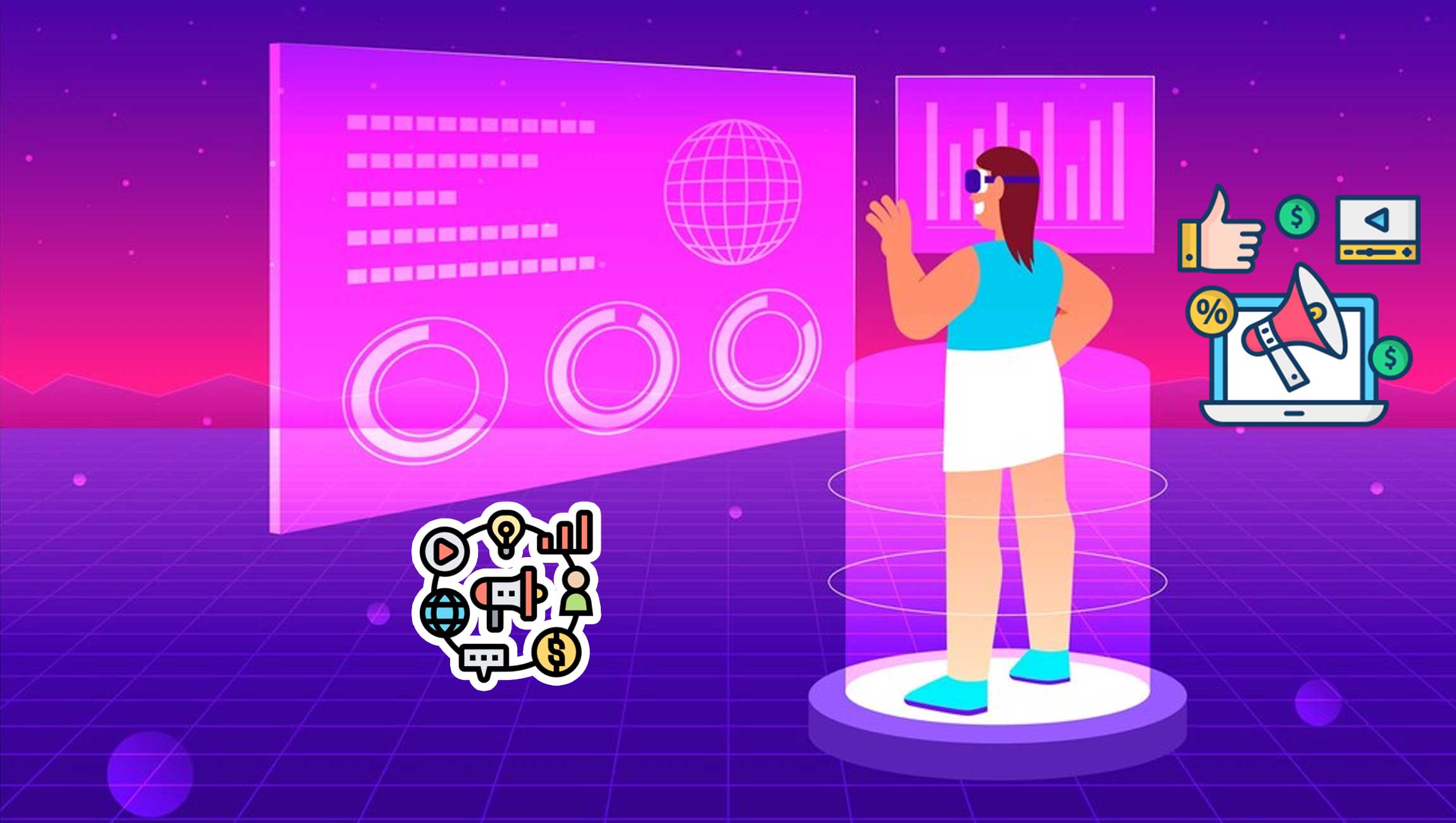Marketing in the Metaverse is a fascinating concept that combines technology, virtual reality, and advertising. The Metaverse refers to a collective virtual shared space, where users can interact with each other as well as computer-generated environments in real-time. This immersive digital realm holds immense potential for marketers to engage with consumers in new and unprecedented ways.
In the Metaverse, marketing strategies rise above traditional boundaries. They offer unlimited opportunities for brand promotion and customer interaction. Businesses can develop virtual experiences, such as interactive product showcases. This will help marketers in providing the users with an immersive way to engage with their products or services. Additionally, personalized avatars and virtual fashion offer avenues for and targeted advertising within the metaverse.
The Metaverse also widens the scope for dynamic data collection and analysis. This helps with enabling marketers to gain deeper insights into consumer behaviour and preferences. By leveraging this information, businesses can tailor their marketing efforts and deliver highly personalized and relevant content to users.
Marketing Technology News: MarTech Interview with Michael Hilts, SVP Products @ Stirista
Current Marketing Trends in the Metaverse
The Metaverse presents a new frontier for marketers. It includes immersive brand experiences, virtual influencers, virtual fashion, and social media integration as some of the prominent trends. Let’s have a look at the current marketing trends in Metaverse:
1. Immersive Brand Experiences:
Marketing in the Metaverse empowers brands to curate immersive experiences that go beyond traditional advertising. Companies can build virtual worlds where users can interact with their products, services, or branded content. This enables a deeper level of engagement and emotional connection, as users can explore and experience the brand in a virtual environment.
2. Virtual Influencers and Personalities:
With the rise of the Metaverse, virtual influencers and personalities have gained popularity. These are computer-generated characters or avatars that act as brand ambassadors. They can engage with users, promote products, and even provide customer support. Virtual influencers offer a unique way for brands to reach their target audience and build authentic connections within the virtual space.
3. Virtual Fashion and NFTs:
In the Metaverse, virtual fashion has become a prominent trend. Users can purchase and customize digital clothing and accessories for their avatars, enabling self-expression and unique style within the virtual realm. Moreover, non-fungible tokens (NFTs) have gained traction to buy, sell, and trade virtual assets, including virtual fashion. Brands can leverage NFTs to create limited-edition virtual items or collaborate with virtual artists to enhance their marketing campaigns.
4. Social Media Integration:
Social media platforms are embracing the Metaverse trend by integrating virtual experiences and features. For example, platforms like Facebook Horizon and Snapchat’s Bitmoji enable users to create virtual avatars and engage with friends in shared virtual spaces. Marketers can tap into this trend by incorporating virtual experiences into their social media strategies, fostering user engagement and amplifying brand reach.
5. Virtual Events and Expos:
Virtual events and expos are gaining momentum in the Metaverse. Brands can host virtual conferences, product launches, or industry expos, providing an inclusive and accessible platform for attendees worldwide. These events allow for interactive experiences, networking opportunities, and brand showcases, making them a powerful tool for marketing and audience engagement.
6. Gamification and Branded Games:
Gaming is an integral part of the Metaverse, and marketers can harness this by incorporating gamification and branded games into their strategies. By creating interactive and entertaining experiences, brands can captivate users and promote their products or services through in-game advertisements, product placements, or even by developing branded games.
7. Virtual Advertising Networks:
As the Metaverse expands, virtual advertising networks are emerging, offering opportunities for marketers to display ads within virtual spaces. These networks enable brands to target specific audiences, measure ad performance, and optimize campaigns based on user engagement and interaction.
8. Data-driven Personalization:
The Metaverse provides a wealth of data on user behavior, preferences, and interactions. Marketers can leverage this data to deliver personalized experiences and targeted advertising within the virtual space. By analyzing user data, brands can tailor their marketing efforts, optimize content delivery, and enhance customer satisfaction in the Metaverse.
Conclusion
Marketing Technology News: Measuring the Success of Personalization: Key Metrics and KPIs











